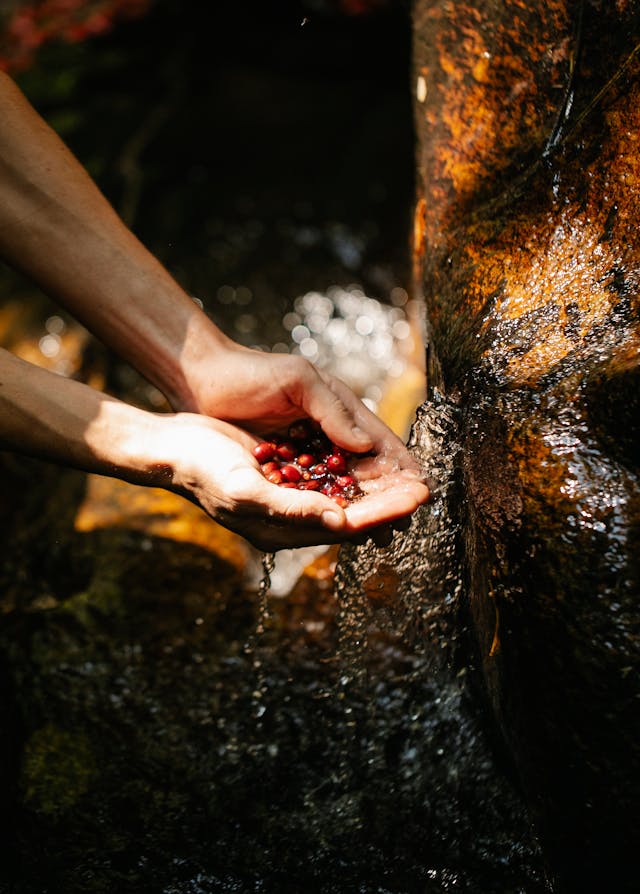
Behind the Beans: How Spring Affects Coffee Harvests Around the World
Share
As spring blooms across the Northern Hemisphere, many of us instinctively reach for lighter, more refreshing brews to match the season. But have you ever wondered how spring affects coffee at the source?
Coffee is a crop that responds dramatically to its environment. From rainfall and sunlight to altitude and temperature, every shift in season brings subtle (and sometimes not-so-subtle) changes to the journey of the bean — and spring plays a pivotal role in shaping the quality, availability, and flavor of the coffee we love.
Let’s take a trip around the globe and explore how spring impacts coffee harvests, and what it means for your next cup.
🌱 Spring in the Coffee Belt: A Global Snapshot
Coffee is grown in what's called the "coffee belt," a band of countries between the Tropics of Cancer and Capricorn. While many of these regions don’t experience four seasons like we do, they do go through wet and dry periods — and those seasonal shifts are critical for coffee production.
☀️ Central & South America (e.g., Colombia, Brazil, Honduras, Peru)
-
Spring season: March through May
-
Coffee cycle: For many countries in this region, spring marks the flowering period following the first rains of the year.
-
Why it matters: This is a delicate and crucial stage — flowers bloom on the coffee trees, and these flowers eventually become coffee cherries. The intensity and timing of spring rains directly influence how evenly and abundantly the cherries will develop. A healthy spring can set the stage for a great harvest later in the year.
🌦️ Africa (e.g., Ethiopia, Kenya, Rwanda, Uganda)
-
Spring season: Varies — often aligns with long rains from March to May
-
Coffee cycle: In Ethiopia and Kenya, for example, spring brings heavy rains that spark flowering and early cherry development.
-
Why it matters: These long rains ensure trees are well-fed and hydrated, which supports better bean development and can lead to complex flavor profiles. However, too much rain can also pose risks, like mold or poor flowering. It’s a delicate balance.
🌾 Southeast Asia (e.g., Indonesia, Vietnam)
-
Spring season: Dry-to-wet transition, depending on the region
-
Coffee cycle: In places like Vietnam, one of the world’s largest coffee producers, spring is often part of the harvest period (January to April), especially for Robusta coffee.
-
Why it matters: The dry conditions are ideal for harvesting and sun-drying coffee cherries. A sudden early rainy season in spring can disrupt drying, leading to mold or fermentation issues.
🌼 Spring's Role in Flavor & Quality
A well-timed and healthy spring season leads to even flowering, which in turn results in uniform cherry ripening — a key factor in producing high-quality beans. When cherries ripen consistently, farmers can harvest more efficiently, and roasters get beans with consistent moisture content, density, and flavor potential.
On the flip side, erratic spring weather — like unseasonal droughts, floods, or frost — can stress coffee trees and lead to inconsistent or damaged crops, reducing yield and altering flavor.
Fun fact: The floral and fruity notes in many light roast coffees are often attributed to beans that matured during optimal spring conditions. That bright, citrusy Ethiopia you love? It likely started its journey with a spring rainstorm.
☕ What This Means for You
As a coffee drinker, spring affects what shows up in your cup in more ways than you realize:
-
Seasonal availability: Some origins may see delays or lower yields due to spring weather patterns.
-
Flavor shifts: A good spring leads to better, more balanced flavor profiles in the final cup — often lighter, fruitier, and more floral, which align beautifully with spring sipping.
-
Pricing: Poor spring conditions can reduce harvest sizes, which may lead to higher prices or limited editions for certain regions.
🌍 Supporting Farmers Through Spring Transitions
Spring is a season of both promise and vulnerability for coffee growers. Many specialty coffee farmers depend on precise spring weather to produce the high-quality beans we crave. When you support ethical and direct-trade coffee, you're helping ensure these farmers have the tools, education, and resources to adapt to shifting seasonal patterns — including those brought on by climate change.
In Bloom & In Your Cup
Next time you sip a floral light roast or a sweet, juicy single origin, remember — the story of that bean may have started in a spring rainstorm halfway across the world.
Spring reminds us that coffee is a living, seasonal product. It connects us — as drinkers — to a global rhythm of growth, care, and craft. So, as the flowers bloom and your cold brew clinks with ice, take a moment to savor the journey of your coffee, from seed to sip.
Would you like this post tailored to highlight your brand’s coffee blends or direct-trade practices? I can add in product mentions, links, or even a CTA section to help you convert readers into customers!

